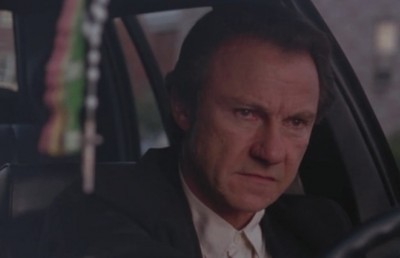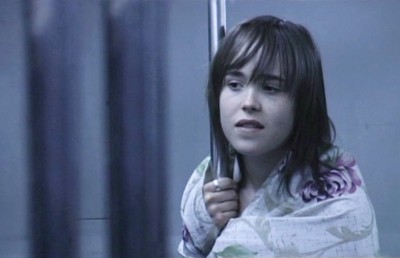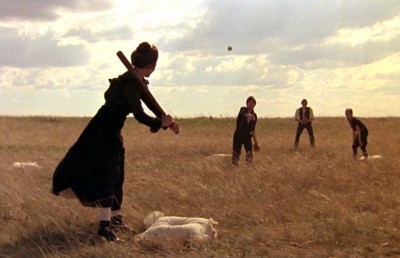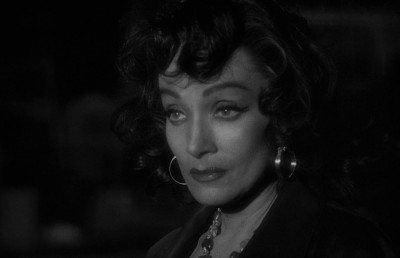Sam Rohdie on Montage
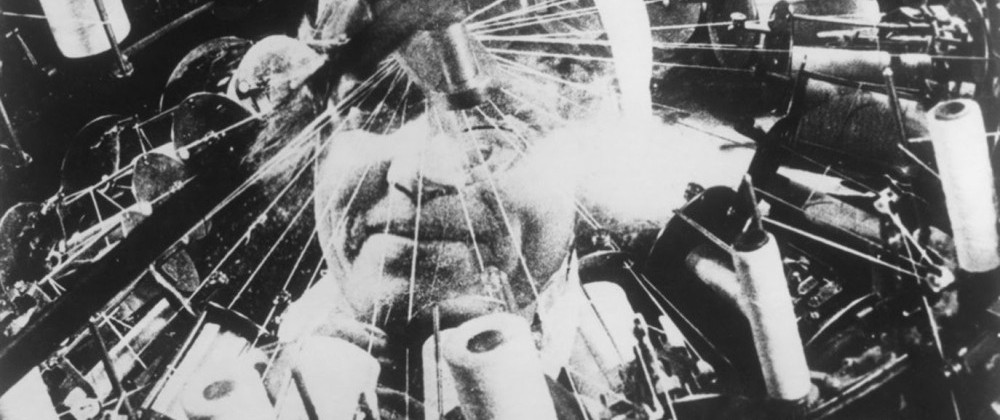
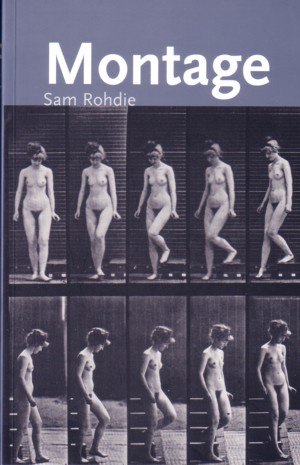
For a subject as broad as montage, it is surprising that there are so few complete books devoted to it from a theoretical/critical standpoint. There are of course many books from a purely practical side. One standard that bridges the two (practical/theoretical) is Karl Reisz and Gavin Millar’s, The Technique of Film Editing (1968). Another recent (and unsuccessful) attempt to bridge the two is Ed Spiegels’ The Innocence of the Eye. Spiegel is a former student of the great Slavko Vorkapich and this book cobbles together his own account of what he learned from his mentor. A problem with Spiegel’s book is that it deals far too much in rudimentary material that will not enlighten anyone but the novice (who in turn would have no idea of who Vorkapich is). In Montage author Sam Rohdie seems guided by his own intuition on what montage means and does not provide an overriding philosophy to bridge together the twenty-five short chapters (probes really). The twenty-five chapters deal with directors, yet the book is never auteurist. In some cases the chapter is a close analysis of particular scene(s) from a film, or a generalized reading of a whole film. In some cases the director is treated as much for his theoretical musings as his work (Pier Paolo Pasolini, Eisenstein, Vertov). In other cases, Rohdie uses the director to serve a more generalized or abstract idea. For example, in the two chapters on Takeshi Kitano Rohdie discusses neither film nor musing, but a little creative exercise that Kitano proposed to the editors of Le Cahiers du cinema for their anniversary issue #600 (April 2005), which involved sending them sixty-nine photographs of various subjects/objects, out of which four would be chosen to form a mini-narrative. Kitano provided four of these ‘mini-narratives,’ in a vertical sequence of four photos with captions on the side, and then Le Cahiers du cinema invited fourteen other filmmakers to do the same (the result can be seen in a supplement to the issue no. 600).
The connective conceptual tissue between the disparate chapters is desire. Rohdie sees montage as a form of giving over to various forms of desire. In a step back, montage is the arrangement of time and space in cinema, from the beginning of cinema, where shots lined up against each other in singular blocks of time and space, to the evolution of cinema as a narrative machine, where time and space could be figuratively broken up for purposes of suspense, emphasis and explication. At first filmmakers were afraid of the ‘gap’ in-between shots and what audiences would make of them. As the language evolved filmmakers became dependent on the audience making sense of the gap (spatial or temporal) between shots, between images. As Rohdie says in his opening probe on Eadwaerd Muybridge, the viewer had to fill in the gap between the individual photographs taken of his moving subjects (horse galloping, woman descending a flight of stairs, etc.). In other words, the movement which was only alluded to. In reference to Kitano’s above mentioned ‘game’ he teased out of the Cahiers du cinema, what we get is product of individual desires (of the filmmakers taking part) to construct meaning into a narrative form. Likewise, he claims that Kuleshov’s famous experiments, the Kuleshov effect, “is the effect of desire” (27). In each series of shots which are interchangeably aligned with the same shot of the emotionless face, we have “First the object of desire, then the desire” (27). The chapter on Eisenstein’s Potemkin is one of the best things I have read on that film, in terms of succinctly expressing the complexities of the film’s connective montage, where graphic gestures, movements, etc., are forever relating to each other from scene to scene. Eisenstein is contrasted to D.W. Griffith, as two grand masters of montage, the former distinguished from the latter by his drive (‘desire’?) to derive meanings expressed through montage beyond narration (from mood, rhythm pace, motif, etc.). With Eisenstein individual shots are often conceived in isolation, or separate from narrative drive, while with Griffith shots are always enveloped by the narrative, no matter how far they may move spatially/temporally from each other. Griffith operates with one unity, one reality, that of the narrative, whereas Eisenstein (and Vertov) operate with a plurality of realities. Griffith’s classic method of suspense –the last minute rescue crosscutting scene– stands in opposition to Hitchcock’s method of achieving suspense –his point of view cutting style.
The chapter on Samuel Fuller deviates from the others by incorporating biography, namely Fuller’s background in tabloid journalism. Rohdie contrasts this background to the avant-garde theatrical background of some of his younger contemporaries (Welles, Joseph Losey, Elia Kazan, Anthony Mann, Nicholas Ray) and links Fuller’s brash style with the sensationalism of the tabloid newspaper, where the manner of telling –bold, explosive, larger-than-life– is more important than the content.
Rohdie has this to say on Howard Hawks’ apparent formal classicism: “It is a matter of mise en scène and of editing with only a hair’s breadth between them, each serving the other and hardly distinguishable” (86). Rohdie quotes Hawks’ apparent dislike of editing: “I dread editing” (86). Not because of the act itself, but because the editing would only expose any weaknesses not addressed in the filming. Of course another point that could be raised here, and one that is relevant given the varying industrial contexts of the directors covered in the book, is that Hawks (and many other Hollywood directors) would have feared editing because it was ‘out of their hands.’ Which is why certain directors were famous (or infamous from the producer’s standpoint) for filming with as little coverage as possible, to reduce the possibility of producer interference. Rohdie uses the second chapter on Hawks to comment on the cumulative technological factors that led to a (temporary) diminishment in editing (or, an increase in the length of shots): cinemascope, depth of field, tracking shots, zoom lens, etc. Rohdie unfortunately uses this to go over old ground: an attack of André Bazin on his ‘metaphysical’ grounds, while lauding his insights on the evolution of the language of cinema. The pro/con debate surrounding Bazin the theorist vs. Bazin the historian/critic has a long history and not one I will get into here (see the Offscreen Bazin special issue). The only point I will make here, is that if you are going to criticize Bazin on his metaphysical assertions of realism, as Rohdie does here (“However wrong Bazin was in his metaphysical conclusions, he had recognized an important historical change and one that divided the cinema between a ‘classical’ one and a ‘modern’ one, not, as he would have it, a cinema that put its faith in the image (montage) and a cinema that put its faith in reality.” p. 90-91), it is far too complex an issue to raise and then curtly refute. In short, Bazin’s ‘metaphysical’ assertions need to be addressed in their proper historical and intellectual context, or else he is erroneously made out as a naïve, apolitical, idealist – (not by Rohdie here, but by too many critics and ‘theorists’ to name, most of whom lacked even an ounce of Bazin’s intellectual and social integrity). An excellent point that comes out of the Bazin discussion is how the shift Bazin noted (in quote above) affected a whole way of filmmaking: “What the new techniques resulted in was a relative lack of centring in the shot and the dissolution of the wholeness of the shot as it was understood and used” (91). So it was not only mise en scène which changed, but montage. Whereas the shot was strongly centered in the classical shooting style of pre-1940s Hollywood (master shot scene, classical continuity cutting, etc.), it now became more common to find a “multiplicity of perspectives, framings, distances, points of interest whereas previously the shot, so crucial to the editing patterns of the ‘classical’ cinema concentrated interest, centred upon details and by forcing the spectator into a position thereby securing his understanding” (91). In the process, stripping what Bazin would refer to as the ability to seek and choose what to look at, in what order, and when.
It is not surprising that Rohdie follows this discussion with a chapter on Jean Renoir and his Rules of the Game. Unfortunately, it is a chapter which adds little new to our understanding of this great film (largely because so much has been written on it) and in fact talks very little about montage, failing to even mention the abrupt shift to montage style during the rabbit hunt sequence. It is also interesting that after making the point in the Bazin discussion that the shift in style Bazin noted had little to do with realism, he ends up by claiming that one of Renoir’s greatest acts in this film was to make the film “more open to ‘reality’” (99).
As the book goes on one begins to realize a reason why there are so few books exclusively about montage: because the discussion of montage inevitably leads to a discussion of much else, sometimes to the point where montage is secondary, almost an after thought or, more appropriately, a starting point. After the second chapter on Hawks, which introduces Bazin, Rohdie goes on to devote two chapters each to Renoir and Jacques Rivette, (Bazinian) directors who relied much more on the long take/camera movement/depth of field than on editing. Which begs the question, why choose such directors when there are many directors for whom editing is much more important? The short and simple answer is that when discussing montage its absence can become as important as its presence. Hence in a film with little actual editing, each individual edit has the potential to be very important. So for these chapters Rohdie ends up talking about the suppression of montage, which, as strange as it may sound, seems natural enough.
The book mirrors the opening chapter on Eadweard Muybridge by concluding on that other seminal pre-cinema figure, Ètienne-Jules Marey. In this final chapter Rohdie compares the linearity of Muybridge’s sequential photographs to the simultaneity of Marey’s chronophotography, both of which were ultimately unable to express the fluidity of time without either leaving out the gaps within each movement (Muybridge) or leaving out the distinctiveness of the movement itself (Marey). Rohdie concludes that the fluidity of time which eluded Muybridge and Marey found its perfect match in “the artifice of cinema.” The multiplicities of time –the overlapping of tenses, of the past, present, future, of the linear and the simultaneous– could not be contained by Bazinian realism (perhaps only by REALITY?) and that the ambiguity of realism so dear to Bazin (and the durée so dear to one of Bazin’s intellectual wellsprings, Henri Bergson) can only be expressed by the dual force of (“the artifices of cinema”) sequence shots and “meticulous” editing.
I would be remiss if I did not point out how this otherwise interesting and fine concluding chapter gets off to a bad start when Rohdie explains the illusion of movement in cinema by referring to the (dreaded) persistence of vision: “At the level of frame to frame, the fact of persistence of vision covers the gap in time between frames since the first image remains imprinted on the retina during the time it takes for the successive one to appear and thus what is discontinuous in filming and projection is made continuous by perception” (133). While persistence of vision may account for why we do not see the black gap between each film frame, it does not explain why we see movement out of a succession of still images. It is disheartening to see persistence of vision used yet again to explain the illusion of cinematic movement in a book written in 2006. This ‘myth’ (and it is just that, a myth), which has been doubted as early as 1915 (by Hugo Münsterberg in his The Film: A Psychological Study) and refuted as late as 1978 by Joseph and Barbara Anderson in “The Myth of Persistence of Vision” [1], and should be relegated to the dustbin of history, continues to get routinely repeated by respected cinema scholars, historians and theorists. Myths indeed die hard, and authors Joseph and Barbara Anderson had to return to this ‘repeated offense’ fifteen years later in their essay “The Myth of Persistence of Vision Revisited,” where they once again tried to discourage the continued use of the term ‘persistence of vision’. [2] To summarize their arguments, since there is no motion in moving pictures (they are after all still images) the movement is a result of “a transformation made by our visual system.” The real issue is that there are different types of motion, ‘real’ motion, and two types of “apparent” motion: “These two types of apparent motion –that is, the perception of motion from multi-element or closely spaced displays, and the perception of motion resulting from more widely spaced displays– have come to be termed short-range and long-range apparent motion, respectively” (Joseph and Barbara Anderson, 1993). You can say there are three different types of movement: real motion, short-range apparent motion, and long-range apparent motion, with slightly differing perceptual processes involved in all three. But what recent findings have revealed is that whereas the mind can and does distinguish between long-range and short-range apparent motion, it can not distinguish between short-range apparent motion and real motion. Hence, “To the visual system the motion in motion picture is real motion” (Joseph and Barbara Anderson, 1993). The authors then conclude:
Since we know that the individual pictures of a motion picture are not really moving, and that our perception of motion is therefore an illusion, and since we now know that the effect has nothing to do with persistence of vision or phi movement, we suggest that henceforth the phenomenon of motion in the motion picture be called by the name used in the literature of perception — short-range apparent motion (Joseph and Barbara Anderson, 1993).
In some respects the Andersons are fighting an uphill battle. I can not see the day where film scholars will refer to the “short-range apparent motion” of cinema, but one only hopes that their efforts will eliminate some of what can only be now referred to as intellectual laziness. All of this is not to pick on Rohdie, or this otherwise interesting work, but is meant as a general comment on the field of film studies, and its sometimes (in some quarters) retrograde nature.
There is a certain form=content aspect to Rhode’s small, intelligent book: like the montage he elaborates, the book’s parts are not always cohesive or related in a linear, obvious cause and effect manner; it is sometimes up to the reader to fill in the ‘gaps’, and this is not necessarily a bad thing. For example, as Rohdie moves ‘linearly’ from Griffith, to Eisenstein to Vertov, the underlying progression is a weakening dependence on narrative. While in Griffith montage always circles back to narrative (and mise en scène), Eisenstein begins to loosen the need for narrative, and by the time we get to Vertov, narrative (and the need to stage actors in mise en scène) gives way to meanings achieved entirely in post-production. Rohdie exaggerates when he says that in Vertov “there is no mise en scène” (82). More accurately, there may be no mise en scène in the filmed streets scenes (some of which were filmed with a hidden camera by his brother Mikhail Kaufman), but there is mise en scène in the shots, for example, of the ‘Council of Three’ (him, his brother, and his wife/editor Elizaveta Svilova). While this book would not fare well as an introduction to montage, simply because it does not explain the key concepts that are implicit in his readings, it can be a pleasurable, interactive journey (and cause for debate) for readers with a solid grasp of the classic theories of montage (Eisenstein, Vertov, Kuleshov, Burch, Bazin, etc.).
Endnotes
1 Anderson, John and Fisher, Barbara (1978). “The Myth of Persistence of Vision.” Journal of the University Film Association30(4), 3–8.
2 “The Myth of Persistence of Vision Revisited,” Journal of Film and Video, Vol. 45, No. 1 (Spring 1993): 3-12, is also available online.



